Changes in the energy system and the role of Geothermal heat pumps
Is Geothermal heating worth the Cost?
Heat pumps (HP) are a well-known technology for heating and cooling residential buildings and swimming pools. From 2017 to 2020, the EU sold 800,000 units of electric heat pumps per year, representing more than 8 million units. Therefore heat pumps play a more important role in the heating sector. In electric heat pumps, electricity is used to raise the low temperature to a high temperature and consequently to a high energy level through a vapor compression cycle. Atmospheric heat is drawn from sources such as air, water, or land. Heat pumps are known as low-carbon technology for generating heat in homes. The performance coefficient (COP) of the heat pump and the CO2 emissions from power generation determine the operating phase emissions of the heat pump.
What is a geothermal heat pump?
Geothermal heat pumps (GHPs), sometimes called geo-exchange, earth-coupled, ground-source, or water-source heat pumps, have been in use since the late 1940s. They use the Earth's relatively constant temperature as a medium of exchange instead of the outside atmosphere. They can reduce your utility bills and geothermal units are more efficient.
How Geothermal heat pump works?
We all want to save money on heating and cooling our homes and office, don't we? The answer could literally be under your feet. About half of the solar energy reaches the earth and is stored in the ground, with a constant temperature of about 55 to 80 degrees Fahrenheit, depending on your location. A geothermal heat pump taps this energy, providing heat in the winter and cooling it in the summer.
A geothermal heat pump system consists of a loop of pipes buried underground to transfer energy to a heat exchanger or system. The heat pump is usually located inside the pump.
When it is cold outside the ground, try to collect heat from the ground and pump it into your home via a geothermal heat pump. When it is hot outside, the geothermal heat pump collects heat from your home and pumps it to the cooler ground below. Since geothermal heat pumps pump heat to and from the earth, it has virtually no effect on the environment.
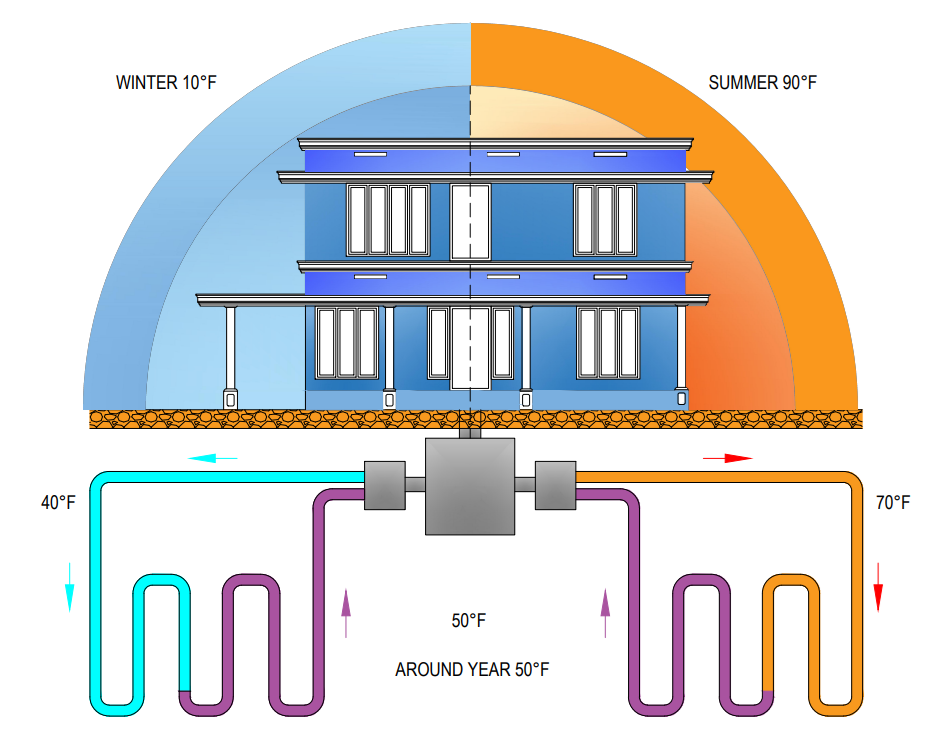
Types of geothermal heat pump
A geothermal system can help you save a significant amount on home heating and cooling costs by reducing your energy consumption. These systems come in a few different types, each with its own pros and cons. The type of system that is right for your home depends on several factors such as climate, soil conditions, available land, and local installation costs to determine which is best for the site. There are four basic types of ground loop systems. Three of these – horizontal, vertical, and pond/lake – are closed-loop systems. The last one is the open-loop system.
Open-loop geothermal systems
In this system, they use an open-ended pipe to pump up groundwater, which is much closer in temperature to the surrounding ground. The water flows through heat exchangers inside the heat pump and then back into the ground, but at a distance from the point of use. This type of system requires a lot of care as you need to make sure the suction water doesn't damage or clog the pump or heat exchanger. Additionally, in some locations, there are environmental regulations that dictate that source water must be treated before it is discharged back into the ground. Sediment and contaminants from the groundwater can clog and wear out the system, which is not the case with closed-loop systems because the refrigerant flows through the loop without actual contact with the groundwater. All of this makes these systems more expensive to maintain and have a shorter lifespan, but they have a lower initial cost and excellent efficiency.
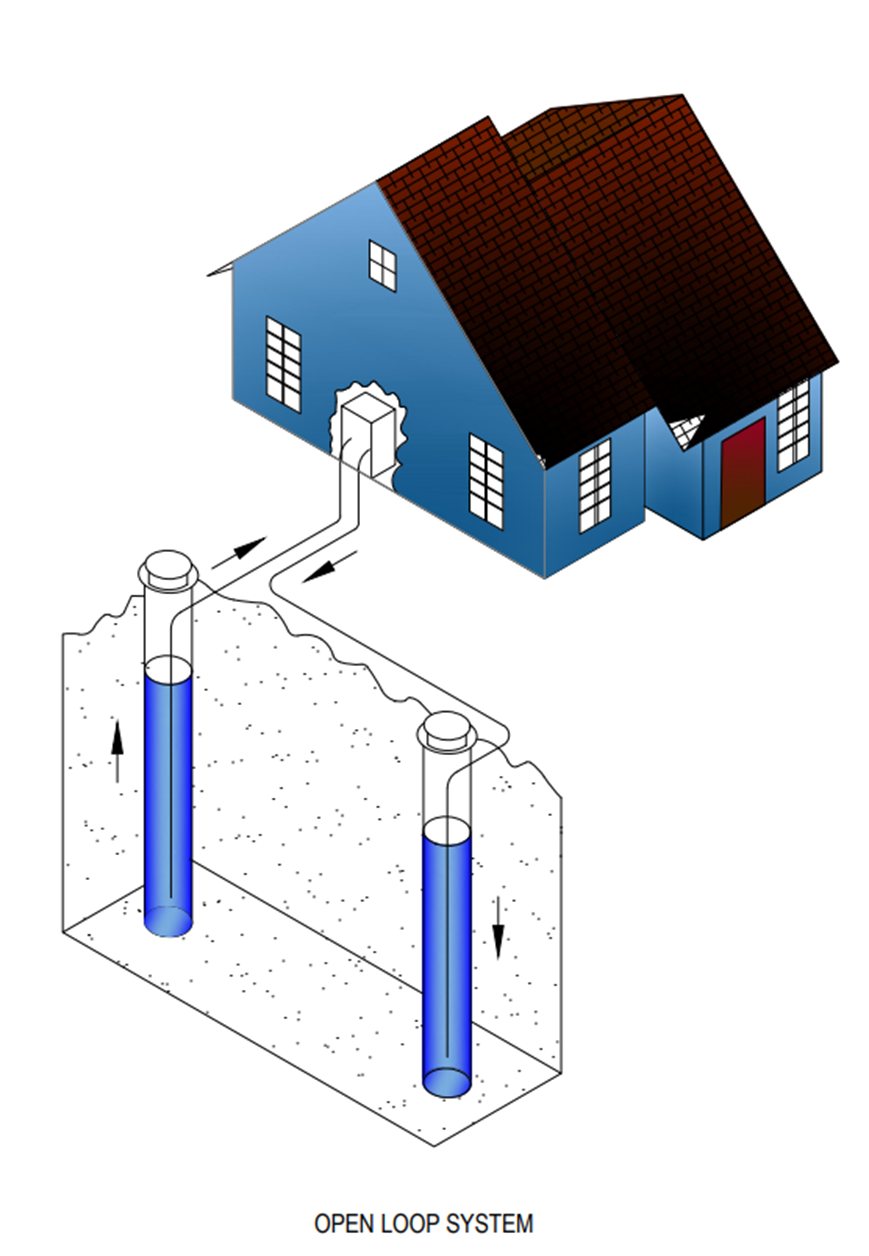
Closed-loop systems
Closed-loop geothermal heat pumps circulate an antifreeze solution through a closed loop usually made of a high-density plastic hose that is either buried in the ground or submerged in water. The heat exchanger transfers heat between the refrigerant in the heat pump and the antifreeze solution in the closed loop. The closed-loop system can be subcategorized into 4 types according to the orientation of the heat exchanger loops in the ground.
In vertical loops, the heat exchanger is vertically oriented and has multiple holes drilled directly into the ground. The number of holes, their depth, the distance between them, and the amount of liquid in the U-tubes will vary depending on the soil, temperature variations, and home heating and cooling needs. A big advantage of vertical systems is that they can be installed in a small space.
The closed-loop system is generally the least expensive for residential installations, especially land-rich new buildings. Horizontal loops consist of pipes placed horizontally in the ground, the pipes are usually buried 1 to 3 m underground but can reach up to 100 m in length. If the loops are too shallow, they will work too cold in the winter.
Pond loops are underwater systems installed in water bodies near the home. These systems do not require drilling or digging, which can reduce costs, but the water must be deep enough so that the loops are not exposed to surface temperatures. If the site has sufficient water, this may be the most cost-effective option.
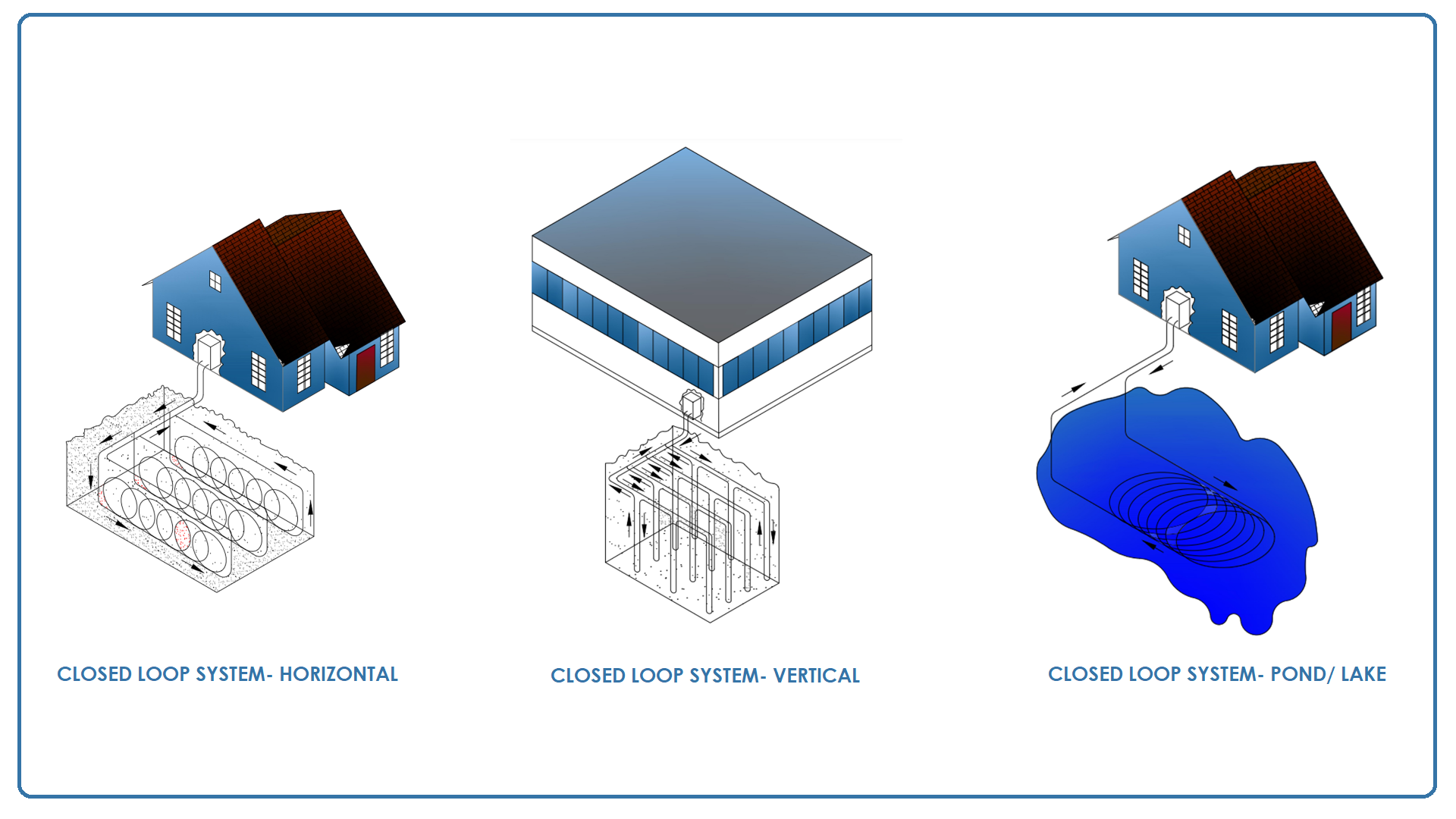
How to replace the existing heat pump with a geothermal heat pump?
Geothermal heat pumps measure in tons. 1 ton equals 12,000 BTUs and a 3.5kW heat pump. Assuming your old heater is the right size, you can use it to calculate the size of the new geothermal heater. For example, if your existing heater is 48,000 BTU (14 kW), you would need to purchase a 4-ton ground source heat pump unit.
Is Geothermal Heating and Cooling Worth the Cost?
While the initial cost of geothermal energy can be much higher than a traditional HVAC system, geothermal heat pumps are more efficient than traditional heating and cooling systems. Typical payback from system savings is usually 8-10 years. However, keep in mind that these systems have an average lifespan of over 20 years for the heat pump and around 50 years for the underground infrastructure. In most cases, closed-loop systems can be expected to last 50 to 100 years with little maintenance. To reduce the upfront cost of the Ground source heat pump, government policies and incentives such as tax credits and grants have been used to reduce the payback period.


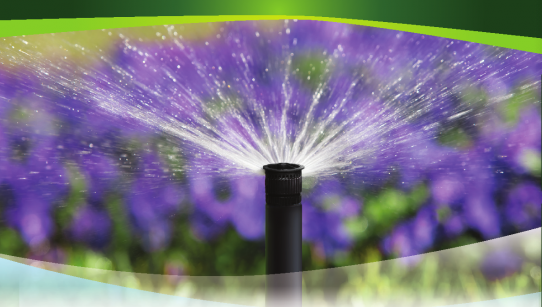



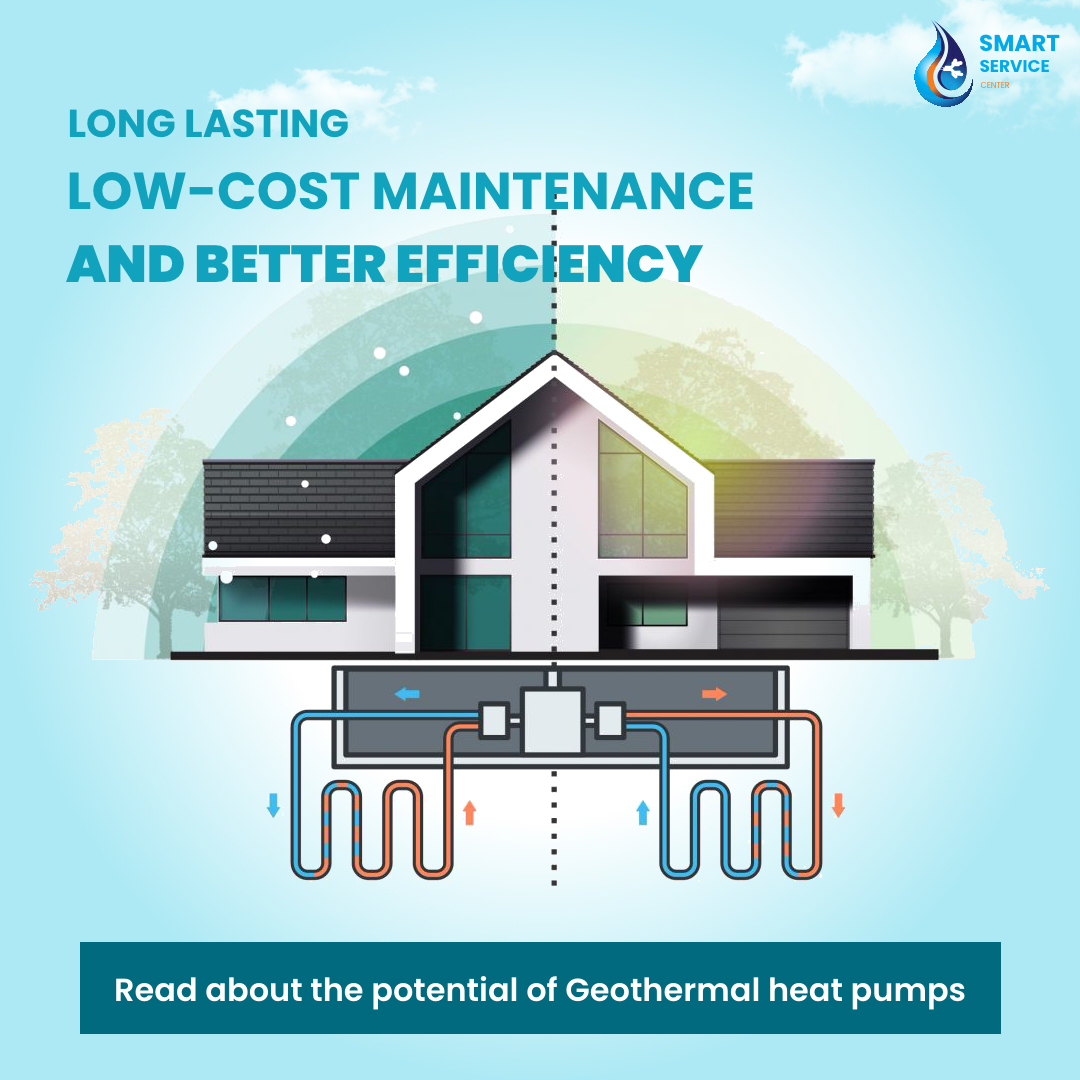
.png)




No comments yet